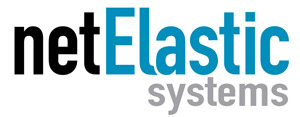Network disaggregation has been gaining momentum among broadband service providers. Why?
Let’s start at the beginning. Network disaggregation separates the hardware and software components of a network, which gives broadband service providers more choices and flexibility. And fueling the move to disaggregated networks is the need for more network scalability and agility, due to the never-ending demand for more bandwidth.
This is a transformational shift from traditional, proprietary networking solutions to an open, software-based approach. The growth in network disaggregation is also leading to an increase in router disaggregation (such as broadband network gateways). Unlike traditional routers that bundle software, hardware, and chips from a single vendor, disaggregated routers enable service providers to choose best-of-breed software and cost-effective x86 servers from multiple vendors. This new approach enables broadband providers to break free from the constraints of proprietary solutions and adopt a more flexible and scalable network infrastructure.
Broadband Network Gateways
In today’s digital age, reliable and high-speed internet connectivity has become essential for daily life. One of the critical components responsible for ensuring seamless internet access are Broadband Network Gateways (BNGs), which are the access point for individuals (subscribers) to connect to the broadband network. The BNG aggregates traffic from many subscribers and routes it to the network of the service provider.
Broadband service providers traditionally bought proprietary, bundled BNGs from large router manufacturers, such as Cisco and Juniper. However, these proprietary solutions suffer from high costs and a lack of scalability. Lower-priced proprietary routers, such as those from MikroTik, are also difficult to scale.
Disaggregated Broadband Network Gateways
Disaggregated, or virtual BNGs, increase network scalability and flexibility by separating network functions from proprietary hardware appliances. By disaggregating vBNG software from the underlying hardware, you don’t have to purchase additional hardware appliances every time you need more network capacity. All it takes is a few software commands to add more capacity quickly. Virtual BNGs also disaggregate the control plane from the data plane, so each can grow independently of each other.
Disaggregated vBNGs offer broadband service providers many benefits, including:
- Greater scalability
- Increased flexibility
- No more vendor lock-in
- Significant cost savings
Given these benefits, vBNGs have gained traction due to the increasing demand for flexibility, scalability, and cost-effectiveness in network infrastructure.
A Leader in Disaggregated Broadband Network Gateways

netElastic is a software company that developed one of the industry’s first disaggregated BNGs and has been a leader ever since. netElastic has become an industry leader by using software-defined networking (SDN) technology to deliver market-leading scalability and flexibility with an optimized data plane and highly scalable design.
netElastic vBNG also takes advantage of the ever-increasing power of x86 servers to provide the elastic scalability broadband providers need. As a testament to its scalability, netElastic supports very small subscriber bases up to hundreds of thousands of subscribers.
Given the importance of vBNG performance, Intel and netElastic have been working together to raise the bar on vBNG performance. In recent tests conducted by Intel, netElastic vBNG reached 1 Terabit of throughput on a 2 RU server powered by 4th Gen Intel Xeon Scalable processors. This is a new level of performance for vBNGs.
A Disaggregated Broadband Network Gateway Success Story
Telpin is a high-speed internet service provider in Argentina that has been serving customers for over 50 years. Telpin’s customer base was growing and customers were constantly using more bandwidth. As a result, the company was nearing capacity limits with their Juniper and Huawei access routers, which were also expensive to support and nearing end-of-life.
Unfortunately, these proprietary routers weren’t very scalable, which meant they had to be upgraded or replaced to handle the increased workload. And upgrading or replacing legacy hardware-based routers is expensive. Also, Telpin wasn’t interested in a one-time increase in capacity. They wanted the ability to add capacity as network demands warranted.
netElastic’s virtual broadband network gateway was immediately attractive to Telpin since the disaggregated, software-based solution provided the elastic scalability Telpin was looking for. netElastic’s software-based solution and market-leading scalability have also helped Telpin lower its costs by more than 70% over legacy, hardware-based solutions. These cost savings are helping Telpin expand into new markets.
According to Martin Pagano, Technical Manager at Telpin, “vBNG’s scalability will allow us to keep pace with network demands from our expanding subscriber base. Best of all, we won’t have to continually replace our infrastructure.”
Summary
As we look to the future, internet traffic will continue to grow. To keep ahead of the growing demand for bandwidth, broadband providers are migrating from proprietary hardware-based edge networks to scalable disaggregated networks. This trend is also happening to BNGs, with service providers increasingly adopting virtual BNGs for their greater scalability, flexibility, and cost savings.
For more information on disaggregated BNGs, please read the Telpin case study.

